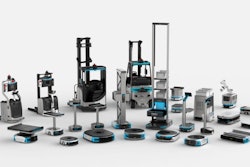
With the global supply chain experiencing profound disruptions in an era of rising inflation, relationships with suppliers are more important than ever. Unfortunately, those relationships are nearing a breaking point for many organizations as suppliers struggle to fill orders and payments are delayed.
The increasing cost of supplies isn’t the only thing that can hurt operations during inflation. Without the right AP processes in place, organizations can put significant strain on supplier relationships to the point where they dissolve. This is perhaps most evident when organizations opt to outsource their AP function entirely. (More on this in a bit.)
At the end of the day, accounts payable (AP) holds a lot of power to either improve or hurt supplier relationships for one simple reason. The department controls what suppliers care about the most: getting paid on time.
Why do inconsistent payment cycles hurt suppliers and companies?
When it boils down to it, executives can’t run their businesses on unclaimed receivables and IOUs. Instead, they need steady, predictable cash flow to weather the ebbs and flows of their operations and keep all the vendors they rely on happy.
Inconsistent payment cycles hurt suppliers because those organizations often struggle to pay bills, make payroll, and acquire raw materials and other goods when cash isn’t coming in. This can force them into difficult decisions.
On one end of the spectrum, that might mean putting a credit hold on a customer’s account and only filling orders once payments have come in. On the other end, it might mean deciding to stop doing business with a customer altogether and instead only working with those who pay steadily.
At the same time, inconsistent cycles hurt companies by preventing them from taking advantage of every available payment discount or ensuring that they pay precisely on the due date — not sooner or later — to stretch out their own cash flow while avoiding late-payment penalties.
To solve these problems, organizations first need to understand what best-in-class AP processes look like.
What does a good AP process look like?
A good AP process is pretty straightforward: It’s as efficient as possible, suppliers get paid when they’re supposed to, and companies are able to optimize their cash flow to meet their unique needs. To achieve these benefits, invoices must be digitally transmitted, validated, and queued for payment scheduling without human intervention.
Unfortunately, when organizations rely on outdated AP software or manual processes, this ideal state is essentially impossible to achieve. The more human hands involved in the process, the more likely errors will ultimately seep in and the slower the process will become.
To illustrate, take the common scenario where a supplier doesn’t put relevant information on an invoice (e.g., a purchase order line number). An AP professional ends up spending a lot of time manually resolving two- and three-way PO match approval requirements, which is a poor use of their energy.
In these scenarios, businesses are left thinking, “There has to be a better way.”
Which approach to AP is best for my business?
When organizations want to improve their AP processes, they generally have three options to choose from:
1. Updating manual processes
2. Outsourcing the AP function
3. Investing in AP automation
1. Updating manual processes
Some organizations look to in-house optical character recognition (OCR)-based solutions. While this approach can improve things to an extent, it doesn’t eliminate the need for manual intervention because OCR technology is error-prone. It’s common for characters to be misread, so AP staff has to verify most invoices manually. Additionally, in the event suppliers fail to send “perfect invoices,” the AP team is forced to intervene; an OCR solution won’t resolve issues with the supplier. For example, if AP receives an invoice without a PO line number or incorrect total, AP staff will need to resolve the problem. This delays payment, causes friction, and frustrates suppliers. It’s also a wasteful use of the AP team’s time.
2. Outsourcing the AP function
Other organizations investigate whether it makes sense to outsource their entire AP department to a business process outsourcer. In many cases, these outsourcing outfits are relying on OCR technology too (or worse, scan and key), which presents the same set of problems. When companies outsource AP, they lose control over the timing of payments and control over cash due to inconsistent and often delayed processing cycle times.
Another problem is the lack of connectivity and feedback loop with the supplier. As such, suppliers can’t get invoice and payment status information in real time — or anything close to it. And in the event that there’s an invoice error, missing information, or an invoice doesn’t match with a purchase order, the invoice will be sent to the customer instead of the supplier, forcing the company to manually resolve invoice exceptions.
In addition to losing control over cash flow and the ability to eliminate invoice exceptions, outsourcing the AP function prevents companies from capturing analytics necessary to continuously optimize processes and make smarter decisions. Companies want to know, with easy-to-use reporting, which suppliers are causing supply chain disruptions or offering early pay discounts, for example.
3. Investing in AP automation
If an organization is looking to improve its in-house AP function, investing in a cloud-based AP automation platform is a great choice. By doing so, companies take control of their cash and ensure that suppliers are paid accurately and on time, whether that’s early for a discount or on the last day within terms.
Leading AP automation platforms enable companies to achieve 100% straight-through processing, with the technology automating two- and three-way matching. The result is a well-oiled, predictable AP function that eliminates human effort, thereby freeing the team to focus on other important areas of operations.
One critical piece of leading AP automation platforms is they enable organizations to create a direct connection and feedback loop with their suppliers. In addition to eliminating human effort to process invoices, these digital connections provide visibility for suppliers into the customer’s payment cycle. Instead of having suppliers contact the already-busy AP team to try and find out when they should expect payments to hit, suppliers can self-serve that information at their own leisure. Not only does this give suppliers more visibility into their own cash flow situations, but it also saves the AP team a ton of time because they won’t have to handle “Where’s my money?” requests any longer.
Transform the supply chain and strengthen supplier relationships with automation.
Supply chain executives today face unprecedented challenges in the wake of a global pandemic, rising inflation, and strained supply chains. To say that today’s business climate is difficult would be an understatement.
While these problems will no doubt persist, the good news is that smart investments in AP automation tools can help supply chain executives overcome them. With the right solution in place, teams will be able to optimize their cash flow while keeping suppliers happy, staying in good standing with them, and differentiating their organizations from the rest.
On the other hand, maintaining the status quo will only bring headaches their way — whether that’s in the form of late payments, missed early-payment discounts, or an overworked AP staff.
With so much on the line during these interesting times, the choice is clear.













